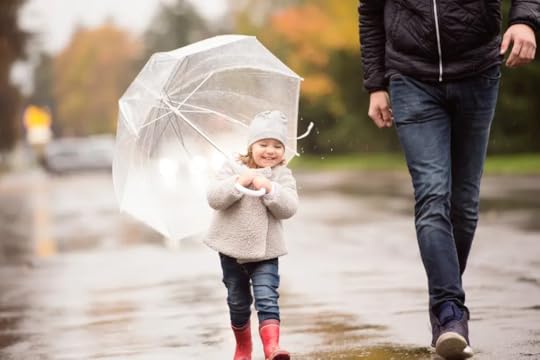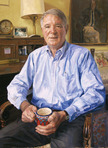Seeing What a Child Sees
On The Epoch Times website, there is an article by Kate Vidimos, dated 2/11/2023 which illustrates how emotionally powerful a short story can be. Ms Vidimos describes a short story by Nathaniel Hawthorne, the early nineteenth century American writer, about a walk he took with his young daughter.

Kate Vidimos is a 2020 graduate from the liberal arts college at the University of Dallas, where she received her bachelor’s degree in English. She is a journalist with The Epoch Times and plans on pursuing all forms of storytelling (specifically film) and is currently working on finishing and illustrating a children’s book.
Ms Vidimos writes: “Look! Do you see how that light shines on the pavement in the rain? It sparkles like magic and spreads its light, despite the dark clouds which seem to discourage it. Such is the world as seen through the eyes of a child.
In his short story “Little Annie’s Ramble”, Nathaniel Hawthorne encourages us to take a childish view of the world to refresh and simplify the sober, complex adult world. As he takes his daughter’s hand for a walk, Hawthorne shows how a child can lead us on a magical and wise journey.
Hawthorne takes his little 5-year-old daughter Annie by the hand to wander and wonder aimlessly about the town. They set out for the town-crier’s bell, announcing the arrival of the circus: Ding-dong!
From the beginning, Hawthorne notes the difference between himself and Annie, like the bell’s different notes (ding-dong). His adult step his heavy and somber (dong). Yet Annie’s step is light and joyful, “as if she is forced to keep hold of [his] hand lest her feet should dance away from the earth” (ding).
They journey along, looking at the different people, places, and things that present themselves to their view. Hawthorne moralizes and philosophizes about these different subjects, seeing the objects within the windows as they are, while Annie trips along dancing to an organ-grinder’s music and seeing in the windows her reflection.
Yet, as they pass along, Hawthorne’s mind grows more aligned with Annie’s. As they pass a bakery, they both marvel at the many confectionary delights in the window. He remembers his own boyhood, when he enjoyed those treats the most. As his daughter’s hand wraps around his own, childhood magic wraps around him.
But behold! The most magical place on earth for a child is the toy store. In its windows, fairies, kings, and queens dance and dine. Here, the child builds fantastical worlds that “ape the real one.” Here lives the doll that Annie desires so much.
Hawthorne sees Annie’s imagination weave stories around this doll. He thinks how much more preferable is the child’s world of imagination to the adult world, where adults use each other like toys.
They continue on and journey through the newly arrived circus. They see an elephant, which gracefully bows to little Annie. They see lions, tigers, monkeys, a polar bear, and a hyena.
The more they see, the more Hawthorne’s view adopts a childlike wonder. Just as Annie imagines the doll’s story, Hawthorne weaves different stories around the animals. The polar bear dreams of his time on the ice, while the kingly tiger paces, remembering the grand deeds of his past life.
Through this story, Hawthorne realizes that, though he can never truly return to his childhood, he can adopt his daughter’s wonder. Such a wonder-filled ramble teaches much wisdom.
Others will discount such a ramble as nonsense. Yet Hawthorne exclaims: “A little nonsense now and then is relished by the wisest men.”
A child’s sense of wonder can enable one to see light in the air, beauty in the normal, and magic everywhere. The world is a place of wonder and magic, and a place of “pure imagination,” so look for it and you will see it.”



